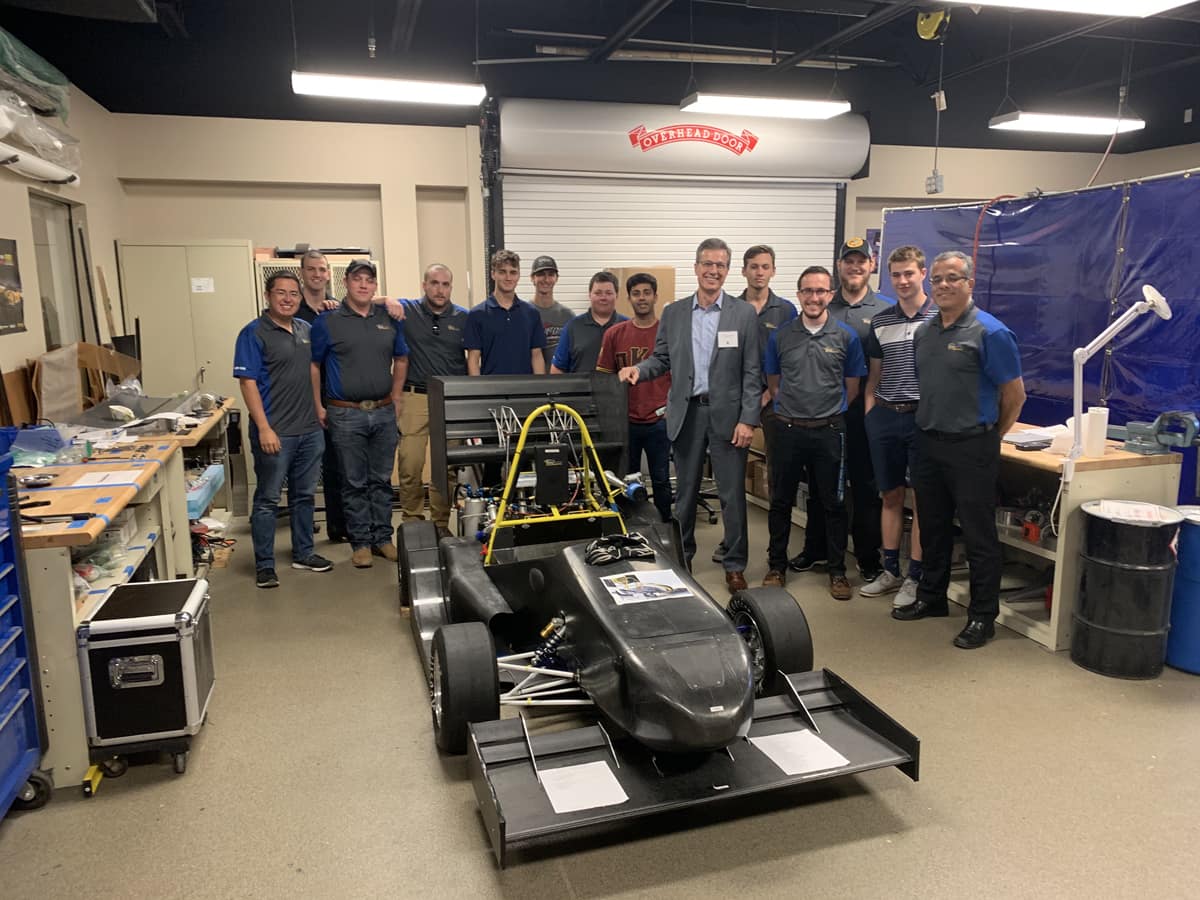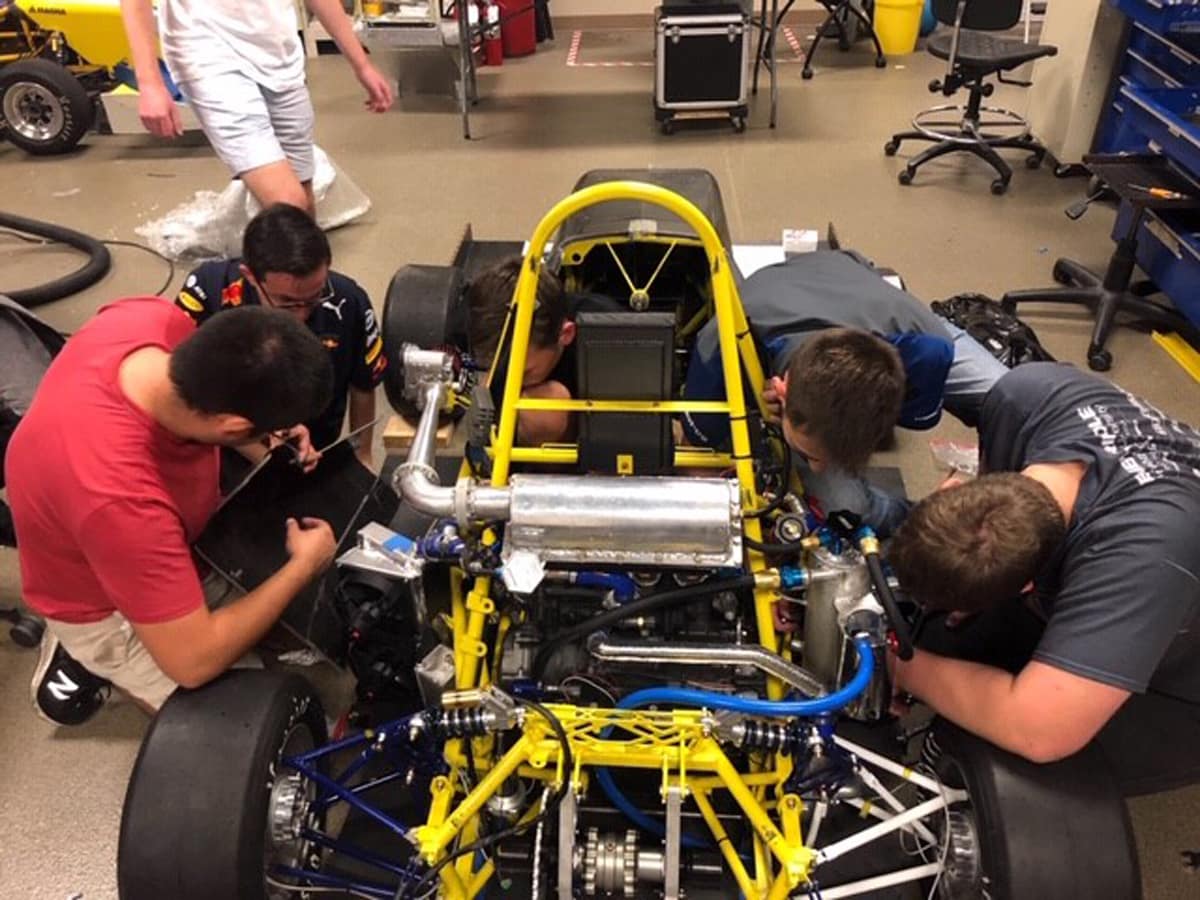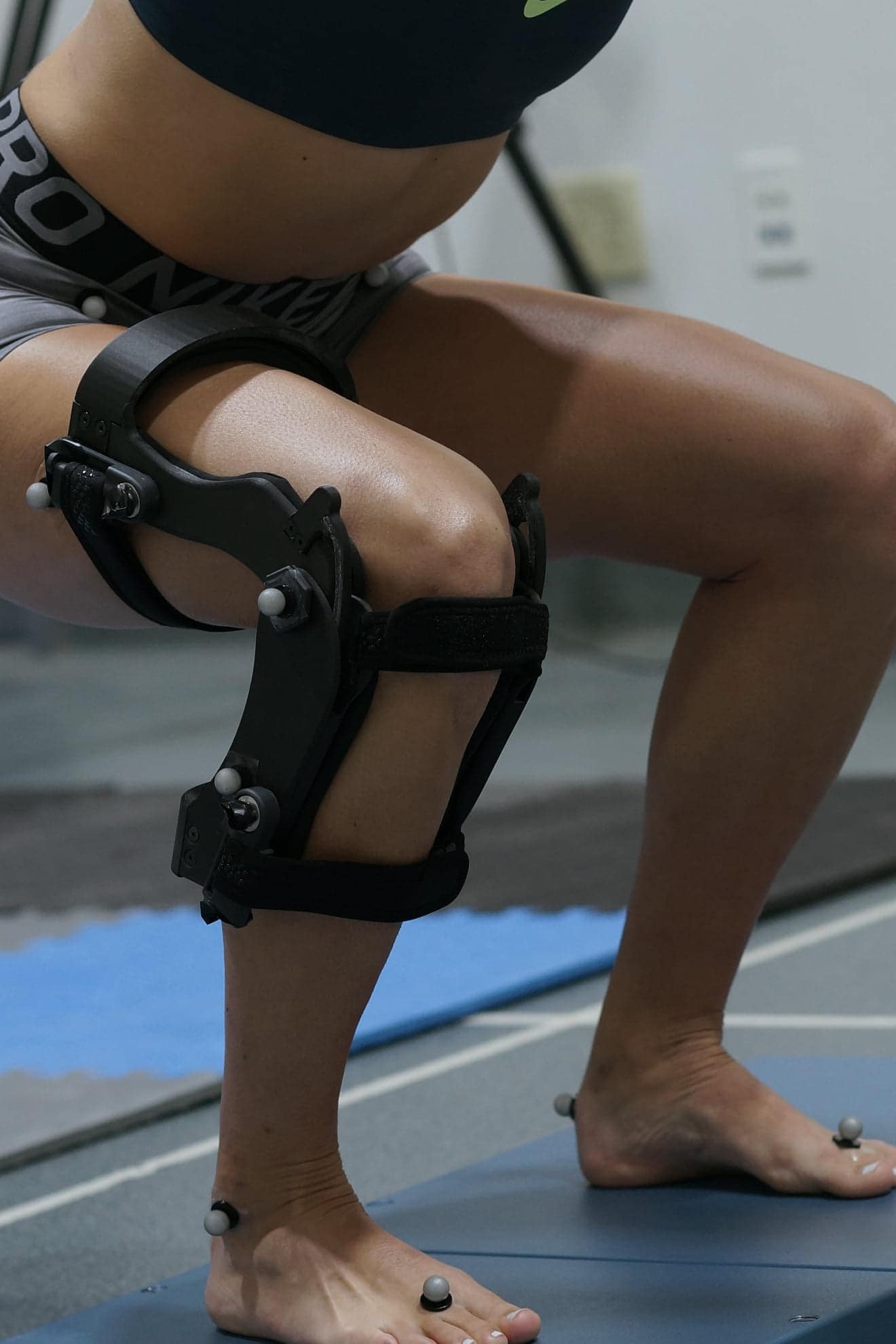The Embry-Riddle Biomechanical Analysis Lab (ERBAL) is used for research in biomedical engineering, space physiology, unmanned vehicles, and high performance vehicles. Faculty and students both can observe the motion capture technology live in the lab or by using post-processing programs such as Nexus or musculoskeletal programs such as OpenSim. Students can also get involved by taking ME 344 or ME 544 with Dr. Walck or joining one of the many on-going projects.
Biomedical Engineering
Uses biomechanics, computer science, imaging, and neuroscience to analyze muscle function, study human movement, enhance medical rehabilitation protocols, and optimize human performance.
Projects
- Pediatric Orthopedic Surgery Research - Does Performance with the Overhead Deep Squat Predict Lower Extremity Kinematics During a High-Velocity Pivot Task in Adolescent Female Soccer Players?
- Orthoses - Biomechanical Response of the Knee Complex to a Non-Linear Spring-Loaded Knee Joint Orthosis.
- Hip Dysplasia Research - motion-based scaling of infant musculoskeletal model for DDH treatment.
- Open-Joint Arthroplasty (TMJ) Research - The Evaluation of Three Temporomandibular Joint Replacements through Kinetic and Kinematic Analysis for Jaw Closing Movement
- Sport Biomechanics
Space Physiology
The hostile environment of space has adverse short- and long-term effects on the human body, specifically causing muscle atrophy, bone decalcification, and poor cardiovascular endurance. This research aims to effectively reduce the gap between precondition and post-condition syndrome.
Projects
- Mitigate Microgravity Deconditioning Syndrome using Resistive Exercise as a Countermeasure
- A Novel Resistance Exercise Machine For Use In A Lower Body Negative Pressure Box To Counteract The Effects Of Weightlessness
- The Effects of Bone Decalcification Due to Micro-Gravity
High-Performance Vehicles
The objective of a kinematics & compliance (K&C) rig is to measure the realistic kinematics and compliance of vehicle suspension under a quasi-static load conditions. These conditions are for vertical, horizontal braking and lateral forces the suspension and uprights of the car will endure. This data will be used to explain and adjust the teams tuning and vehicle setup for current and future generations of cars. The compound goal of this is to utilize the data gathered to run Lap time simulation (LTS) and engineering design structures of suspension.
Projects
- Formula Society of Automotive Engineers 1
Embry-Riddle Aeronautical University’s Motion Capture Lab is outfitted with the following hardware and software
Hardware
- VICON Motion Capture System consisting of four Vero v2.2 cameras mounted on tripods and 12 Vantage V5 (eight wide lenses and four standard lenses) mounted along the ceiling’s parameter. Camera's frame rates are synced to the lesser of the two cameras (i.e. 330 Hz). 4 mm passive reflective markers
- AMTI's OR6-6-OP-2K-CTY 2000 series force plates specifically assesses external forces along three perpendicular axes and moments about the associated axes as well as the average COP with an accuracy of a fraction of a millimeter. (High sensitivity and low crosstalk less than 2% on all channels; a sampling rate of 1000 Hz; a 10 V maximum excitation; and is designed for analysis of athletic performance, running and jumping.)
- Delsys Inc Wireless System Muscle activation in the current research was measured using the Delsys Inc Wireless System. A trigger module (Delsys, Natick, MA) used to synchronize the EMG data with VICON’s motion data, was connected directly into the Lock (VICON, Denver, CO) via RCA connection. A Trigno Avanti Docking Station (Delsys, Natick, MA), also seen in Figure 40, interfaces with the trigger module allowing for the wireless EMG sensors to send a digital signal to the computer running at an RF frequency band of 2400-2483 MHz. The docking station maintains a range of 40 meters, but for the current study it is limited to the range of the Delsys Trigno Mini EMGs at 20 meters; the EMG sensors have a sampling rate of 1926 samples per second.
Software
- Vicon Nexus Motion Capture System
- OpenSim 4.0 musculoskeletal modeling
- EMGworks
- Notepad++
Lab Information
Location: The John Mica Engineering and Aerospace Innovation Complex, Room 107
Lab Director: Christine Walck, Ph.D.





